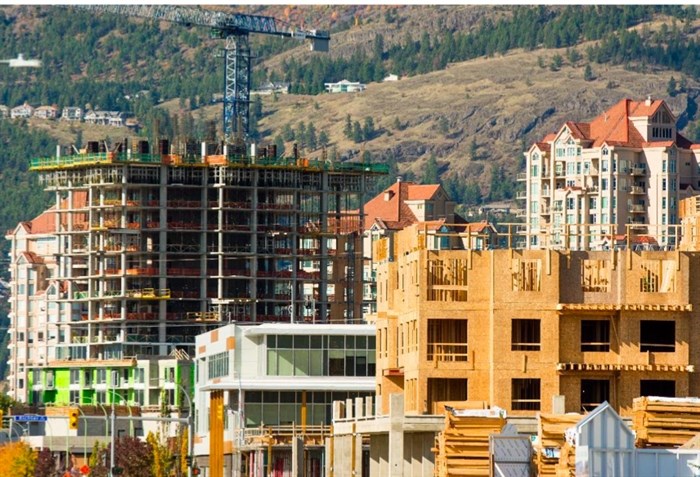Kelowna wants to create more affordable housing but will wait for more studies
After almost two hours of discussion about the dire need for affordable housing in Kelowna, city council agreed to let staff continue to study the issue some more.
“This is probably one of the most critical priorities in the city right now, as we hear almost on a daily basis,” councillor Loyal Wooldridge said today, March 13, after staff outlined what actions the city takes now and what more could be done.
Councillors had lots of questions and some suggestions but no one pushed for an urgent call to action.
Any actual changes that might boost the supply of affordable housing in the city will have to wait until later this year when staff go back to council with updated plans on housing needs and affordability.
One tool the city already uses is “land partnerships,” which provide long-term leases at nominal fees for below-market housing. To date, the city has leased land for nine such projects to B.C. Housing for a total of 392 below-market housing units.
The city has also set up an Affordable Housing Land Acquisition Strategy to pay for such lands. Staff are compiling an inventory of what land the city, senior government and non-profits currently own that can be used for affordable housing. Funding for the land strategy comes from two sources: taxes collected on short term rentals and through property taxes.
A new density bonuses program requires developers to pay fees to the city if they want to increase the density of their projects. Since the program is so new, payments aren't expected to start flowing into city coffers until later this year.
There was some discussion about whether the density bonusing program should be amended to require developers to build a certain percentage of affordable units in each new building. The city had a program like that more than a decade ago that did result in a small number of affordable units scattered around city.
“One of the reasons the last density bonus program failed, ultimately, was because staff didn’t have the ability to enforce every single housing agreement,” long range planning manager James Moore told council. “That affordability benefit comes with an administrative obligation and a failure to follow up on that obligation ultimately leads to the failure of the program in the long run. It’s something that really has to be thought through carefully.”
It's much easier, he said, to provide the land to non-profits and let them worry about keeping the units affordable.
READ MORE: Why this Okanagan city can't get affordable housing in new highrises
That doesn’t mean that Kelowna won’t follow the lead of many other B.C. cities that require actual units be built. What it does mean is there will be more discussion and planning before any changes are made, if they are made.
Another program the city uses is called the Revitalization Tax Exemptions where no taxes are paid on improvements to a piece of land for 10 years for rental projects but that is not tied to affordability. To date, the city has issued a total of 32 exemptions, totalling $1,377,598 a year in tax exemptions. Six were below-market projects developed by non-profits.
Councillor Luke Stack pointed out that, often, the land is sitting vacant so the city is not actually collecting much in the way of taxes so, really isn’t giving up anything to waive taxes when it is developed.
The program is popular but could be amended to have an increased focus on affordable housing, Moore said in a written report to council.
Easing parking requirements is another way to lower the cost of new construction since each parking stall can cost $40,000 to $70,000.
Currently, the city does allow the number of parking stalls to be cut by 10 to 20% for rental housing but there is no requirement for any of those units to be affordable. Some cities, like Victoria, have cut the parking requirements by as much as 50%.
“Research suggests that both tenure and affordability levels have significant impacts on parking demand,” the report presented to council said. “In short, rental and below-market rental require less parking than market condo projects.
“Supportive housing, for instance, acknowledges that seniors may use private vehicles less frequently and sets a lower parking requirement accordingly. Similarly, very low and low income households are less able to afford private vehicles, suggesting that deeply affordable housing can make a strong case for parking reductions.”
Mayor Tom Dyas cautioned that before any changes are made to current regulations staff need look at the impact of buildings were the parking has already been eased since there is often an overflow of vehicles onto neighbouring streets.
Since developers have to pay $25,000 to $35,000 for each apartment they build, the city has a program where it can reduce those fees by 5 to 20% for rental housing if the builder guarantees they remain rental in perpetuity. That has a small impact on the total cost so, one option would be to increase the tax cuts to 30 to 40% for below market projects. Another would be to waive the fees altogether, but that would require developers of other projects to pay more and for more money to come from taxpayers.
Moore used the term “below market” as a catchall terms for what is often called affordable, attainable or subsidized housing since there are many different meanings applied to those words.
Moore’s report noted that some cities refer to affordable as being accessible to a household earning $65,000 a year. Others say such units need to rent at no more than 85% of average market rents.
Dyas stressed the need to clearly define what is meant by affordable in Kelowna.
To contact a reporter for this story, email Rob Munro or call 250-808-0143 or email the editor. You can also submit photos, videos or news tips to the newsroom and be entered to win a monthly prize draw.
We welcome your comments and opinions on our stories but play nice. We won't censor or delete comments unless they contain off-topic statements or links, unnecessary vulgarity, false facts, spam or obviously fake profiles. If you have any concerns about what you see in comments, email the editor in the link above.




